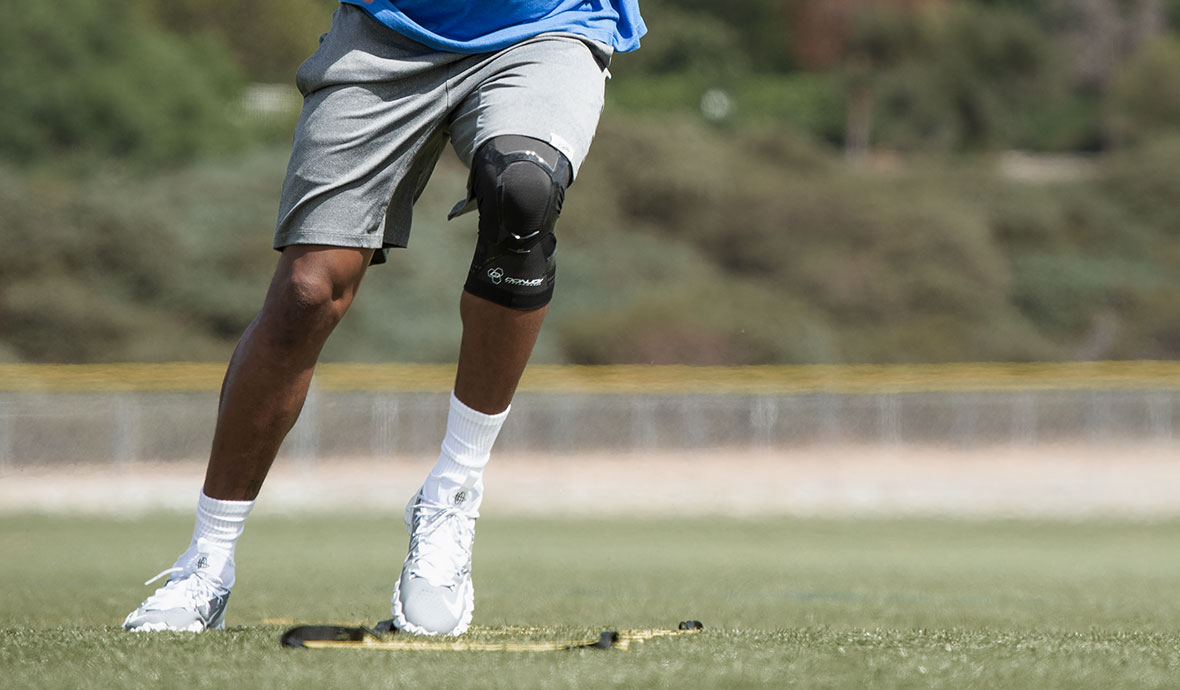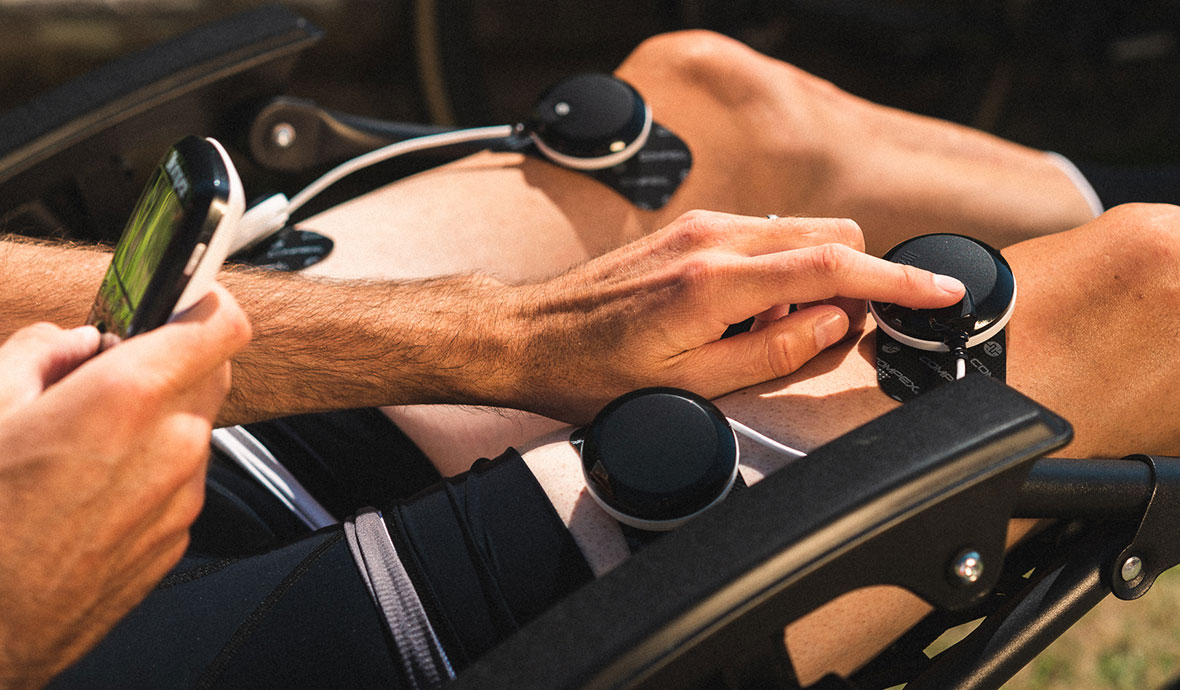Stretching to Warm Up or Cool Down
In addition to maintaining your flexibility or preventing injury, there are many benefits to stretching that can help improve your lifestyle. Stretching helps increase your range of motion, which takes pressure off the joints and allows the body to move more fluidly during exercise. Starting your day or workout with a stretch session can stimulate circulation by increasing blood flow to your muscles and also help relieve stress. You may find that stretching can aid in calming the mind and relieving unwanted tension.1
Compression Sleeves & Braces
Studies suggest that compression sleeves can help reduce muscle pain, damage and inflammation. In addition, compression gear can help ease delayed onset muscle soreness (DOMS). So, wearing a compression support post-workout can help ease soreness and swelling you may experience as well as help improve blood circulation.2
 Donjoy Performance® Trizone® Knee
Donjoy Performance® Trizone® Knee
Heat Therapy
A popular pre-workout or post-workout regimen is heat therapy. Heat therapy helps blood flow and keeps the muscles functioning properly, providing them with more oxygen and nutrients. Heat therapy also helps alleviate muscle tension, soreness and nagging pain from a minor injury. Heat can be applied before activity or after to help your recovery process.3
Cold Therapy
Cold therapy is one of the first steps in post-workout or injury recovery. Ice packs and cold compresses can help reduce swelling and inflammation. In a study by the International Journal of Sports Medicine, researchers found that cold therapy helped to reduce muscle pain in about 80 percent of the observed study and also improved athletic recovery.4 Adding cold therapy into a regular post-workout routine can reduce recovery time and help improve performance.
Foam Rollers
Foam rolling is a form of self-myofascial release5 (think of self-massage) that helps eliminate knots and loosen tight muscles. It can also help increase blood flow to your muscles, which can help improve range of motion and assist with recovery.
 Compex® Wireless
Compex® Wireless
Muscle Stimulation
Both electric muscle stimulation (EMS) or transcutaneous electrical nerve stimulation (TENS) are forms of muscle stimulation that can help stimulate different muscles fibers to aid in pain relief.
EMS provides an electrical current at a specific frequency to target motor nerves. These nerves activate the muscle to contract based on the amount of resistance applied through the device. The brain goes through a process similar to weightlifting.
TENS are small electrical pulses delivered through a device. This can help relieve pain through two different means. By stimulating the sensory nerves, TENS produces high levels of endorphins to help reduce body pain. The other method, known as GATE Control Theory, works to block pain signals to the brain. 6,7
The contents of this article are for informational purposes only. The opinions expressed herein are those of the author and are not necessarily indicative of the views of any other party. Individual results may vary depending on a variety of patient-specific attributes and related factors. Please consult your medical professional for information on whether which if any are right for you.
*Kyle Harrison is a sponsored athlete of DJO.
- https://www.healthline.com/health/benefits-of-stretching
- https://www.ncbi.nlm.nih.gov/pubmed/27106555
- https://www.ncbi.nlm.nih.gov/pmc/articles/PMC3445234/
- https://www.ncbi.nlm.nih.gov/pubmed/29161748
- https://www.ncbi.nlm.nih.gov/pmc/articles/PMC4637917/
- Hadjistavropoulos, T; Craig, K. Pain: Psychological Perspectives. New York; London. Psychology Press, 2004.
- Han JS, Chen XH, Sun SL, Xu XJ, Yuan Y, Yan SC, Hao JX, Terenius L. Effect of low- and high-frequency TENS on Metenkephalin-Arg-Phe and dynorphin A immunoreactivity in human lumbar CSF. Pain 1991; 47: 295–298.